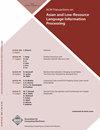Leveraging Hybrid Adaptive Sine Cosine Algorithm with Deep Learning for Arabic Poem Meter Detection
IF 1.8
4区 计算机科学
Q3 COMPUTER SCIENCE, ARTIFICIAL INTELLIGENCE
ACM Transactions on Asian and Low-Resource Language Information Processing
Pub Date : 2024-07-10
DOI:10.1145/3676963
引用次数: 0
Abstract
Poetry is a significant aspect of any language. Many cultures and the history of nations are recognized in poems. Compared to prose, each poem has a rhythmic structure that is quite different. The language has its set of lyrical structures for poems, known as meters. Detecting the meters of Arabic poems is a complicated and lengthy procedure. The text must be encrypted using the Arudi method to classify the poem's meter, which requires complex rule-based transformation before another set of rules classifies the meters. Applying deep learning (DL) to meter classification in Arabic poems includes constructing a neural network to discern rhythmic patterns inherent in various meters. The model can extract essential features, like word lengths or syllable patterns, by tokenizing and preprocessing text datasets. Architectures such as Long Short-Term Memory Networks (LSTM) or Recurrent Neural Networks (RNNs) are fitting solutions to capture temporal relations in poetic verses. This research introduces a Hybrid Meta-heuristics with Deep Learning for the Arabic Poem Meter Detection and Classification (HMDL-APMDC) model. The main intention of the HMDL-APMDC system is to recognize various kinds of meters in Arabic poems. The HMDL-APMDC technique primarily preprocesses the input dataset to make it compatible with the classification process. Besides, the HMDL-APMDC technique applies Convolution and Attention with a Bi-directional Gated Recurrent Unit (CAT-BiGRU) for the automated recognition of meter classes. Furthermore, the adaptive sine-s-cosine particle swarm optimization (ASCA-PSO) algorithm is applied to optimize the hyperparameter tuning of the CAT-BiGRU model, enhancing the meter detection results. A detailed simulation analysis is made to highlight the improved performance of the HMDL-APMDC technique. The empirical outcomes stated that the HMDL-APMDC technique had a superior outcome of 98.53% over recent models under the MetRec dataset.利用混合自适应正弦余弦算法和深度学习进行阿拉伯语诗歌节拍检测
诗歌是任何语言的一个重要方面。许多文化和民族的历史都在诗歌中得以体现。与散文相比,每首诗的节奏结构都截然不同。阿拉伯语有一套诗歌的抒情结构,被称为 "韵律"。检测阿拉伯语诗歌的韵律是一个复杂而漫长的过程。必须使用阿鲁迪方法对文本进行加密,以对诗歌的韵律进行分类,这需要进行复杂的规则转换,然后再用另一组规则对韵律进行分类。将深度学习(DL)应用于阿拉伯语诗歌的韵律分类,包括构建一个神经网络来辨别各种韵律中固有的节奏模式。该模型可以通过标记化和预处理文本数据集来提取基本特征,如单词长度或音节模式。长短期记忆网络(LSTM)或递归神经网络(RNN)等架构是捕捉诗句中时间关系的合适解决方案。本研究为阿拉伯语诗歌节拍检测和分类(HMDL-APMDC)模型引入了混合元启发式深度学习。HMDL-APMDC 系统的主要目的是识别阿拉伯语诗歌中的各种韵律。HMDL-APMDC 技术主要对输入数据集进行预处理,使其与分类过程相匹配。此外,HMDL-APMDC 技术还应用了具有双向门控递归单元(CAT-BiGRU)的卷积和注意技术,用于自动识别诗歌的韵律类别。此外,还采用了自适应正余弦粒子群优化算法(ASCA-PSO)来优化 CAT-BiGRU 模型的超参数调整,从而提高了电表检测结果。详细的仿真分析突出了 HMDL-APMDC 技术的改进性能。实证结果表明,在 MetRec 数据集下,HMDL-APMDC 技术的结果比最近的模型高出 98.53%。
本文章由计算机程序翻译,如有差异,请以英文原文为准。
求助全文
约1分钟内获得全文
求助全文
来源期刊

ACM Transactions on Asian and Low-Resource Language Information Processing
Computer Science-General Computer Science
CiteScore
3.60
自引率
15.00%
发文量
241
期刊介绍:
The ACM Transactions on Asian and Low-Resource Language Information Processing (TALLIP) publishes high quality original archival papers and technical notes in the areas of computation and processing of information in Asian languages, low-resource languages of Africa, Australasia, Oceania and the Americas, as well as related disciplines. The subject areas covered by TALLIP include, but are not limited to:
-Computational Linguistics: including computational phonology, computational morphology, computational syntax (e.g. parsing), computational semantics, computational pragmatics, etc.
-Linguistic Resources: including computational lexicography, terminology, electronic dictionaries, cross-lingual dictionaries, electronic thesauri, etc.
-Hardware and software algorithms and tools for Asian or low-resource language processing, e.g., handwritten character recognition.
-Information Understanding: including text understanding, speech understanding, character recognition, discourse processing, dialogue systems, etc.
-Machine Translation involving Asian or low-resource languages.
-Information Retrieval: including natural language processing (NLP) for concept-based indexing, natural language query interfaces, semantic relevance judgments, etc.
-Information Extraction and Filtering: including automatic abstraction, user profiling, etc.
-Speech processing: including text-to-speech synthesis and automatic speech recognition.
-Multimedia Asian Information Processing: including speech, image, video, image/text translation, etc.
-Cross-lingual information processing involving Asian or low-resource languages.
-Papers that deal in theory, systems design, evaluation and applications in the aforesaid subjects are appropriate for TALLIP. Emphasis will be placed on the originality and the practical significance of the reported research.
 求助内容:
求助内容: 应助结果提醒方式:
应助结果提醒方式:


